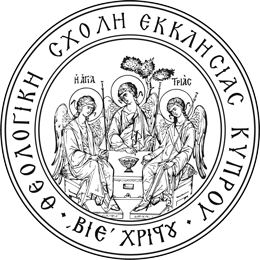Please use this identifier to cite or link to this item:
https://epiphanios.theo.ac.cy/handle/20.500.14286/44Full metadata record
| DC Field | Value | Language |
|---|---|---|
| dc.contributor.author | Κυριάκου, Χρυσοβαλάντης | - |
| dc.date.accessioned | 2025-07-04T10:43:49Z | - |
| dc.date.available | 2025-07-04T10:43:49Z | - |
| dc.date.issued | 2018 | - |
| dc.identifier.isbn | 978-1-498-551-151 | el |
| dc.identifier.uri | https://epiphanios.theo.ac.cy/handle/20.500.14286/44 | - |
| dc.description | This study examines Cypriot society from the crusader conquest of the island in 1191 to the Ottoman conquest of 1571. The author analyzes the ethnic, cultural, and religious landscape of Cyprus and argues that Cypriots adopted a nonviolent, covert form of anti-Latin resistance. | el |
| dc.description.abstract | Medieval and Renaissance Cyprus was a fascinating place of ethnic, cultural, and religious encounters. Following almost nine centuries of Byzantine rule, Cyprus was conquered by the Crusaders in 1191, becoming (until 1571) the most important stronghold of Latin Christianity in the Eastern Mediterranean—first under the Frankish dynasty of the Lusignans, and later under the Venetians. Modern historiographical readings of Cypriot identity in medieval and early modern times have been colored by British colonialism, Greek nationalism, and Cyprocentric revisionism. Although these perspectives have offered valuable insights into the historical experience of Latin-ruled Cypriots, they have partially failed to capture the dynamics of noncoercive resistance to domination, and of identity preservation and adaptation. Orthodox Cyprus under the Latins, 1191–1571 readdresses the question of Cypriot identity by focusing on the Greek Cypriots, the island’s largest community during the medieval and early modern period. By bringing together theories from the fields of psychology, social anthropology, and sociology, this study explores continuities and discontinuities in the Byzantine culture and religious tradition of Cyprus, proposing a new methodological framework for a more comprehensive understanding of Cypriot Orthodoxy under Crusader and Venetian rule. A discussion of fresh evidence from hitherto unpublished primary sources enriches this examination, stressing the role of medieval and Renaissance Cyprus as cultural and religious province of the Byzantine and post-Byzantine Orthodox world. | el |
| dc.description.tableofcontents | Introduction: Eagle, Cross, and Lion: Historiography and Orthodox Cypriot Identities Chapter 1: “Under Heavy Storm and Tempest”: The Coming of the Latins Chapter 2: “In Our Hearts and Our Churches We Do as We like”: Living under the Bulla Cypria Chapter 3: “In Your Light We Shall See Light”: The Controversy over Palamite Hesychasm Chapter 4: “Bounds Set between Us and You”: Boundary Maintenance in a Period of Transformations Chapter 5: “Render unto Caesar”: Cypriot Orthodoxy under the Venetians Coda: The Reed and the Olive Tree Appendices Appendix I: Confession of Faith of the Monks of Kantara and a Synaxary on Their Memory Appendix II: Encyclical Letter to the Cypriots by Patriarch Kallistos I of Constantinople Appendix III: Florilegium on Purgatory and the Afterlife by Francis the Cypriot, OFM. | el |
| dc.language.iso | en | el |
| dc.publisher | Lexington Books | el |
| dc.title | Orthodox Cyprus Under The Latins, 1191–1571 :society, Spirituality, And Identities | el |
| dc.type | Book | el |
| dc.relation.place | United States | el |
| Appears in Collections: | Δημοσιεύσεις σε βιβλία | |
Files in This Item:
There are no files associated with this item.
Items in Repository are protected by copyright, with all rights reserved, unless otherwise indicated.

